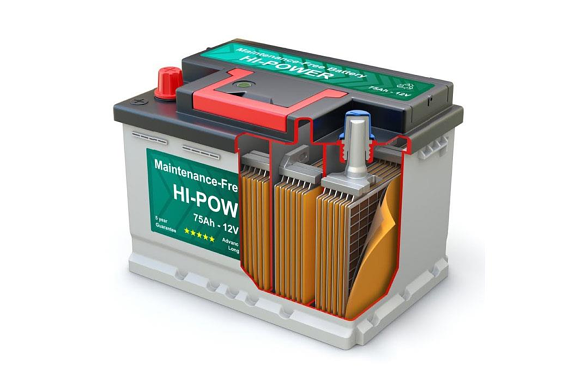
Sarytogan Graphite has added another string to its bow, with lead acid batteries using anodes made from product from its namesake project in Kazakhstan showing a superior discharge capacity than control results in recent testing.
Management says lead acid batteries provide about half of the world’s rechargeable power, with graphite used in the product sold at between US$12,000 (AU$18,170) per tonne and US$20,000 (AU$30,290). The battery anodes are made using ultra-high-purity fines (UHPF), a byproduct of the company’s process of creating uncoated spheroidised purified graphite (USPG) and coated spheroidised purified graphite (CSPG).

Sarytogan Graphite is eyeing the lead acid battery market as a sales point for its ultra-high-purity fines.
Sarytogan says its American technology partner manufactured lead acid battery cells using UHPF from its Kazakhstan project. The performance of the lead acid batteries was measured to have a higher and more consistent discharge capacity when compared to control batteries manufactured with a leading expanded delaminated graphite product.
Management says it is pursuing three potential product revenue streams in relatively equal portions. The first is a microcrystalline graphite at about 80 per cent to 85 per cent carbon to be sold for use in traditional industries including refractories, crucibles, foundries, pencils and lubricants.
‘Sarytogan UHPF has been demonstrated to be suitable for use in alkaline batteries, lithium primary batteries and now lead acid batteries.’
Sarytogan Graphite managing director Sean Gregory
The remaining two thirds will be split and made available to produce USPG for lithium-ion, alkaline and now also lead battery anodes, in addition to UHPF for advanced industrial uses including the nuclear industry and as a cathode activity enhancer for batteries.
The revenue-generating products will be created from its high-grade mineral resource at its Kazakhstan project of 229 million tonnes at an impressive 28.9 per cent total graphitic carbon (TGC).
Sarytogan Graphite managing director Sean Gregory said: “Lithium-ion batteries rightly grab the headlines due to their enormous forecast growth for electric vehicles. The unique attribute of Sarytogan Graphite is that its inverted flowsheet purifies the graphite ahead of spheroidisation generating Ultra-High-Purity Fines as a byproduct. Sarytogan UHPF has been demonstrated to be suitable for use in alkaline batteries, lithium primary batteries and now lead acid batteries, all markets which command premium pricing.”
The company says the most widely used battery chemistry in the world is for lead acid batteries. Its market generated some 450 gigawatt hours of capacity in 2021 in 300 million batteries. About 200 to 250 grams of carbon or graphite is added to each battery for a total market size of 60,000 to 75,000 tonnes per annum.









 Add Category
Add Category